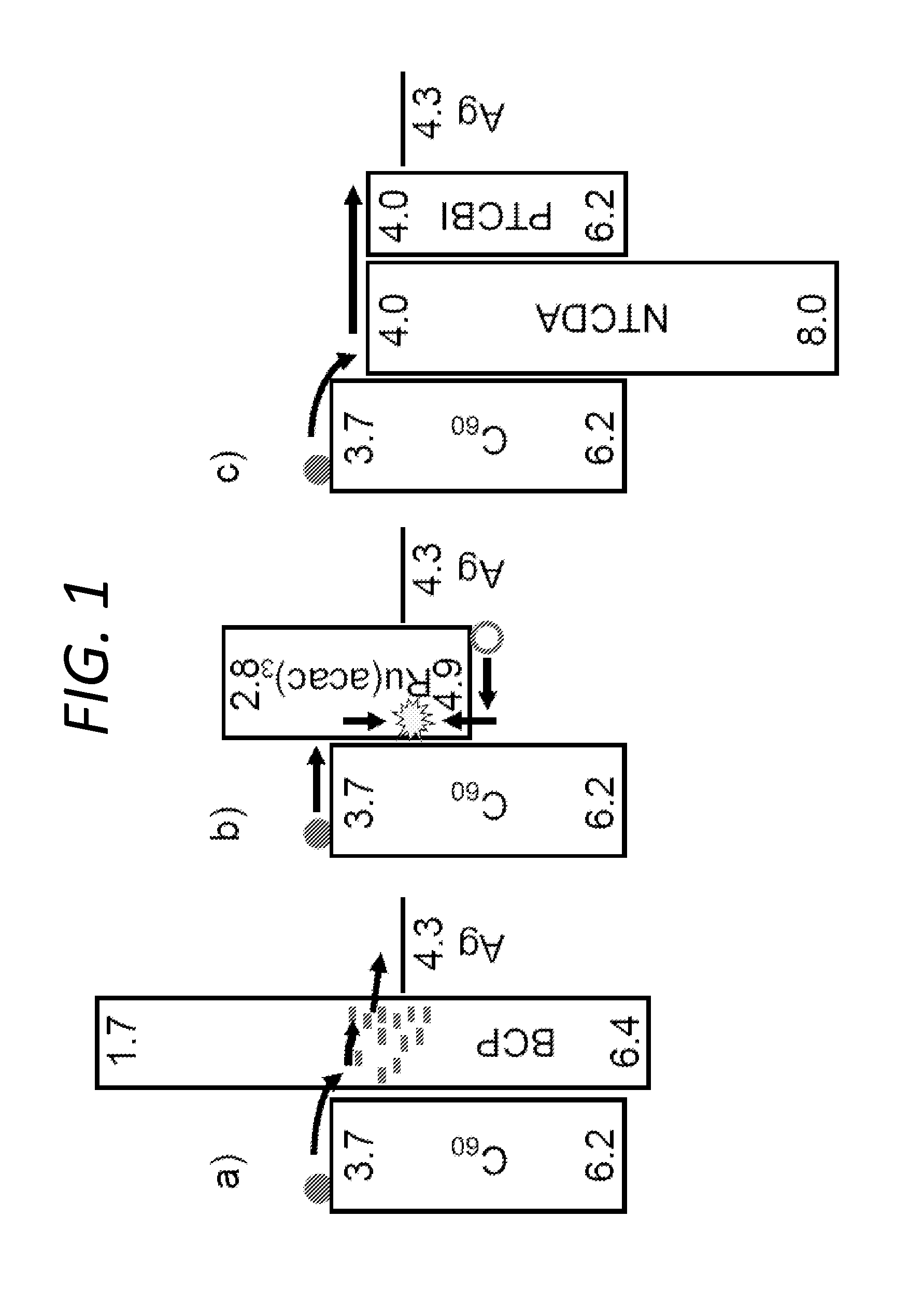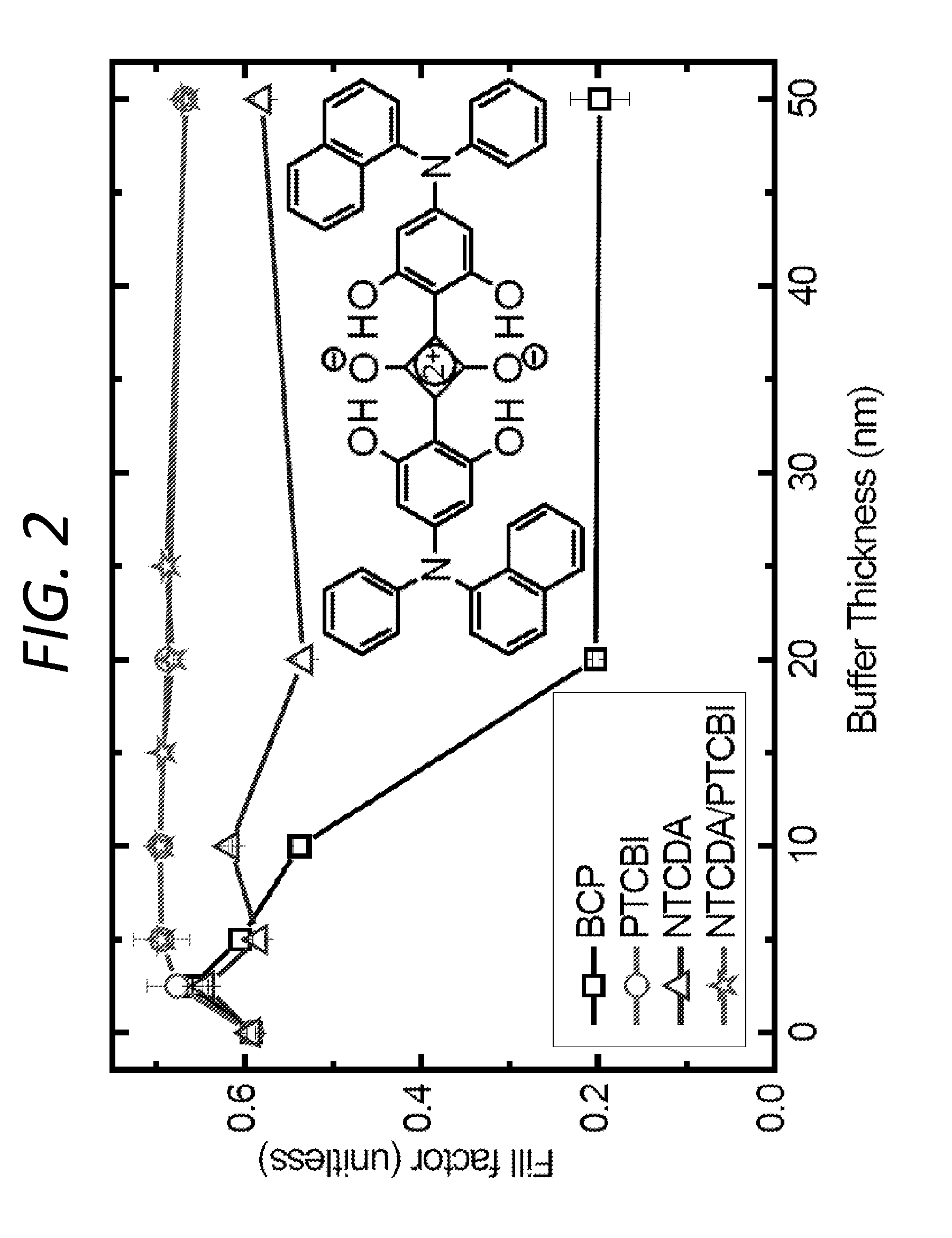Organic photovoltaic cell incorporating electron conducting exciton blocking layers
- Summary
- Abstract
- Description
- Claims
- Application Information
AI Technical Summary
Benefits of technology
Problems solved by technology
Method used
Image
Examples
example 1
[0085]Devices were grown on 150 nm thick layers of indium tin oxide (ITO) pre-coated onto glass substrates. Prior to deposition, the ITO surface was cleaned in a surfactant and a series of solvents and then exposed to ultraviolet-ozone for 10 min before loading into a high vacuum chamber (base pressure −7 Torr) where MoO3 was thermally evaporated at ˜0.1 nm / s. Substrates were then transferred to a N2 glovebox where 2,4-bis[4-(N-Phenyl-1-naphthylamino)-2,6-dihydroxyphenyl]squaraine (1-NPSQ, see molecular structural formula in FIG. 2, inset) films were spin-coated from heated 6.5 mg / ml solutions in 1,2-dichlorobenzene, and thermally annealed on a hot plate at 110° C. for 5 min to promote the growth of a nanocrystalline morphology.
[0086]Substrates were once again transferred into the high vacuum chamber for deposition of purified organics at 0.1 nm / s, followed by a 100 nm thick Ag cathode deposited at 0.1 nm / s through a shadow mask with an array of 1 mm diameter openings. Current densi...
PUM
 Login to View More
Login to View More Abstract
Description
Claims
Application Information
 Login to View More
Login to View More - R&D
- Intellectual Property
- Life Sciences
- Materials
- Tech Scout
- Unparalleled Data Quality
- Higher Quality Content
- 60% Fewer Hallucinations
Browse by: Latest US Patents, China's latest patents, Technical Efficacy Thesaurus, Application Domain, Technology Topic, Popular Technical Reports.
© 2025 PatSnap. All rights reserved.Legal|Privacy policy|Modern Slavery Act Transparency Statement|Sitemap|About US| Contact US: help@patsnap.com



